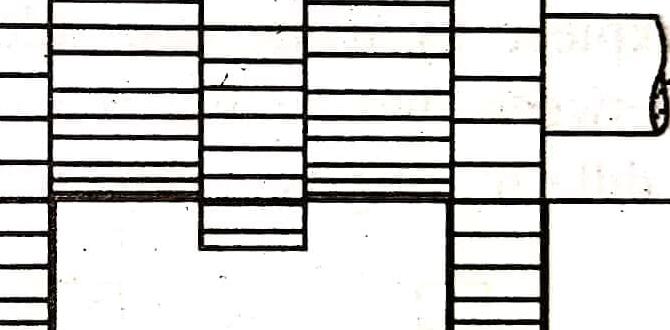Yes, a TiAlN ball nose end mill can be excellent for machining aluminum, but you need to use the right type and cutting parameters to prevent issues. For best results with 6061 aluminum, consider a specialized aluminum end mill with a high polish and fewer flutes, even though TiAlN coatings offer hardness.
Hey there, fellow makers! Daniel Bates here, from Lathe Hub. Ever stared at a shiny aluminum block and wondered which tool would carve it just right? Picking the wrong end mill can lead to sticky, frustrating messes, especially with soft metals like aluminum. But don’t worry! We’re going to demystify the TiAlN ball nose end mill for aluminum. This guide will have you cutting clean, smooth aluminum parts in no time, even if you’re just starting out.
We’ll explore why a TiAlN coating might surprise you when it comes to aluminum and what features to look for. Get ready to transform your aluminum projects from challenging to totally achievable!
What is a Ball Nose End Mill?
Before we dive into coatings and aluminum specifics, let’s make sure we’re on the same page about ball nose end mills. Think of a standard end mill shape, like a flat-bottomed cylinder with cutting teeth. Now, imagine that the very end of the cutter isn’t flat, but rounded, like half of a sphere. That’s a ball nose end mill!
This rounded tip is super useful for:
- Creating smooth, curved surfaces.
- Machining fillets (those nice rounded inside corners).
- 3D contouring and shaping.
- Hollowing out cavities.
The “ball” radius at the tip means it can cut in any direction without leaving a sharp corner or a pointed tool mark. This makes them ideal for creating organic shapes, molds, and detailed 3D carvings.
Understanding TiAlN Coatings
TiAlN stands for Titanium Aluminum Nitride. It’s a super tough, ceramic-like coating applied to cutting tools to improve their performance. You’ll often see it on end mills, drills, and inserts.
What does this coating do?
- Increases Hardness: TiAlN is incredibly hard, which helps the cutting edge last longer.
- Improves Heat Resistance: It can withstand higher temperatures generated during cutting, especially with harder metals.
- Reduces Friction: The ceramic nature can reduce friction, allowing chips to slide off more easily.
- Enhances Tool Life: Generally, a coated tool will last significantly longer than an uncoated one.
Because of these benefits, TiAlN is a popular choice for machining tougher materials like steel, stainless steel, and exotic alloys where high heat and wear are major concerns. This is where the confusion about using it for aluminum often starts.
TiAlN and Aluminum: The Big Question
So, if TiAlN is so great for hard materials and high heat, why might it not be the first choice for soft, gooey aluminum? The main culprit is chip welding, also known as re-welding or built-up edge (BUE).
Here’s what happens:
- Aluminum, especially alloys like 6061, is a ‘gummy’ or ‘sticky’ material.
- When aluminum chips form, they can soften and stick to the cutting edge of the tool.
- This sticky aluminum can build up on the tool, essentially changing its cutting geometry.
- A TiAlN coating, while hard and heat-resistant, isn’t always the best at preventing this adhesion. The very properties that make it good for high heat (like its slight friction) can sometimes encourage aluminum to stick.
When aluminum builds up on the end mill:
- It causes poor surface finish.
- It can lead to inaccurate cuts.
- It generates more heat, making the problem worse.
- It can overload your spindle and even break the tool.
What to Look For in an End Mill for Aluminum (Even with TiAlN!)
While a standard TiAlN coated end mill might cause headaches with aluminum, there are ways to make it work, or better yet, choose a tool specifically designed for it. If you have a TiAlN ball nose end mill and want to try it on aluminum, here are the features that will give you the best chance of success. Often, these might be labeled for “high-performance aluminum machining” or similar, even with a TiAlN coating.
Coating Considerations
While TiAlN is the topic, it’s important to know that coatings like ZrN (Zirconium Nitride) or TiCN (Titanium Carbonitride), or even specialized uncoated, highly polished end mills are often preferred for aluminum. These coatings are generally slicker and less prone to aluminum adhesion.
However, if you’re working with a TiAlN coated ball nose end mill, look for these:
- Polished Flutes: This is CRUCIAL. A mirror-like finish on the cutting flutes helps aluminum chips slide off more easily, reducing the chance of welding.
- Specialized Aluminum Coatings (Even within TiAlN Variants): Some manufacturers might offer TiAlN variants specifically formulated for better performance on softer materials. These might have slightly different compositions or micro-structures.
End Mill Geometry
Beyond the coating, the physical shape of the end mill is vital for cutting aluminum cleanly.
- High Polish: As mentioned, this is key. It refers to the smoothness of the cutting surfaces and flutes.
- helix angle: For aluminum, a high helix angle (typically 30-45 degrees or even more) is beneficial. This steep angle provides excellent chip evacuation, helping to clear the workpiece quickly and reduce heat buildup.
- Number of Flutes: For softer, gummier materials like aluminum, fewer flutes are usually better.
- 2-Flute: This is often the gold standard for aluminum. The larger chip gullets (the space between flutes) allow for maximum chip clearance.
- 3-Flute: Can be used, but you need to be careful with feed rates and chip load to avoid clogging.
- 4-Flute (or more): Generally not recommended for aluminum, as the chip clearances are too small and will lead to rapid clogging and poor performance.
- Center Cutting: Ensure your ball nose end mill is “center cutting.” This means it has cutting edges on the end as well as along the sides, allowing it to plunge straight down into the material. This is essential for operations like plunge milling.
- Specific Diameter & Radius: For your `tialn ball nose end mill 35 degree for aluminum 6061 for plunge milling` application, you’ll be looking for a specific diameter and a corresponding ball radius. The “35 degree” likely refers to a variable helix or possibly a specialized flute grind, which can sometimes improve chip evacuation and chatter reduction. This is a good feature for aluminum.
Choosing the Right Ball Nose End Mill for 6061 Aluminum
When you’re specifically cutting 6061 aluminum with a ball nose end mill, think about these points:
- Material Grade: 6061 is a popular, medium-strength aluminum alloy. It’s workable but can still be sticky.
- Tooling Goal: Are you doing roughing (removing a lot of material quickly) or finishing (achieving a smooth surface)? A roughing end mill might have specialized serrations, while a finishing one will prioritize a smooth flute finish. For general purpose and 3D contouring, a highly polished, sharp tool is key.
- Specific Operations: If “plunge milling” is a key operation, a sharp, center-cutting end mill with excellent chip evacuation is paramount.
For 6061 aluminum, ideal characteristics for a ball nose end mill include:
- Material: Solid Carbide.
- Coating: While we’re discussing TiAlN, consider ZrN or a specialized uncoated/PCD coating if chip welding is a major concern. If using TiAlN, ensure it’s highly polished.
- Flutes: 2-flute is often best.
- Helix Angle: High helix (30-45 degrees or more) for aggressive chip evacuation.
- Finish: Mirror polish on flutes and cutting edges.
A `tialn ball nose end mill 35 degree for aluminum 6061 for plunge milling` sounds like it could be engineered for better chip control due to the 35-degree helix, which is promising. However, its success will heavily depend on that polished finish and the specifics of the TiAlN application.
Machining Parameters: The Key to Success
Even with the “perfect” tool (or the one you have on hand), using the wrong cutting speeds and feeds can ruin your aluminum machining project. Aluminum requires different parameters than steel.
General Guidelines for Aluminum (Using a Ball Nose End Mill)
These are starting points. Always consult your machine manufacturer’s recommendations or specific tool supplier data if available. A good reference for machining is the Machining Data Handbook from the National Institute of Standards and Technology (NIST), though it can be quite technical.
When cutting 6061 Aluminum:
- Surface Speed (SFM): Aluminum machines quite fast. Typical speeds can range from 300 to SFM (Surface Feet per Minute) up to 800+ SFM with high-performance tools and coolant. Let’s aim for a moderate 400-600 SFM as a starting point for uncoated or polished tools.
- Feed Rate (IPM): This depends on the tool diameter and number of flutes. The key is chip load – the thickness of the chip each flute is removing.
- Chip Load: For a 1/4″ (6mm) ball nose end mill, a chip load might be around 0.001″ – 0.003″ per tooth. For a 1/2″ (12mm) end mill, it could be 0.003″ – 0.006″ per tooth. Multiply chip load by the number of flutes and RPM to get your feed rate.
- Feed Rate (F) = RPM × Number of Flutes × Chip Load
- Spindle Speed (RPM): Calculate this using the desired Surface Speed:
- RPM = (Surface Speed × 3.82) / Diameter (inches)
- or
- RPM = (Surface Speed × 120) / Diameter (mm)
- Depth of Cut (DOC): For roughing, you can take more material. For finishing, take lighter passes.
- Roughing: You might take a Radial Depth of Cut (RDOC) of 25-50% of the tool diameter and an Axial Depth of Cut (ADOC) of 0.1″ to 0.5″ (2mm to 12mm), depending on your machine’s rigidity.
- Finishing: Take very light passes, maybe 5-10% of the tool diameter for RDOC and a shallow ADOC (0.010″ – 0.050″ or 0.25mm – 1mm) to get a great surface finish.
Example Calculation for a 1/2″ Ball Nose End Mill on 6061 Aluminum:
Let’s assume:
- End Mill Diameter: 0.5 inches
- Ball Radius: 0.25 inches
- Number of Flutes: 2
- Target Surface Speed: 500 SFM
- Target Chip Load per Tooth: 0.003 inches
Calculations:
- RPM: (500 SFM × 3.82) / 0.5″ = 3820 RPM (Let’s round down to 3800 RPM for safety).
- Feed Rate: 3800 RPM × 2 flutes × 0.003″/flute = 22.8 inches per minute (IPM). Let’s set it to 23 IPM.
Cut Depths (example for 3D contouring):
- Stepover (Radial Depth of Cut): For a good surface finish, start with 20-30% of tool diameter (0.1″ – 0.15″).
- Stepdown (Axial Depth of Cut): For finishing passes, 0.020″ (0.5mm) is a good starting point.
Plunge Milling Specifics: During a plunge, especially if it’s a deep plunge, you might need to reduce your feed rate and depth of cut significantly to avoid tool jams and excessive heat. Many CAM software packages have specific plunge milling strategies that manage this automatically.
Coolant/Lubrication is Your Friend!
Even with good chip evacuation, using a coolant or lubricant is highly recommended when machining aluminum. It:
- Cools the cutting edge, reducing heat and the likelihood of chip welding.
- Lubricates the cut, allowing chips to flow away more freely.
- Improves surface finish.
Options include:
- Flood Coolant: A continuous flow of cutting fluid.
- Mist Coolant: A fine spray of coolant and air.
- Lubricant Stick/Paste: Applied directly to the tool or workpiece for lighter cuts.
- High-Pressure Coolant (HPC): Often found on high-end machines; powerfully directs coolant into the cutting zone.
For home shops, a mist coolant system or a good quality soluble oil mixed with water (following manufacturer instructions) is often a practical choice.
Common Problems and How to Solve Them
Let’s troubleshoot the issues you might run into when using a TiAlN ball nose end mill on aluminum.
1. Chip Welding / Built-Up Edge (BUE)
Problem: Aluminum sticks to the cutting edge, leaving fuzzy surfaces and poor finishes.
Solutions:
- Increase Spindle Speed: Sometimes, a faster cutting speed can help throw the chips off before they weld.
- Decrease Feed Rate (Increase Chip Load): Be careful here – you don’t want to overload the tool, but sometimes a slightly ‘thicker’ chip can carry heat away better. A better approach is to ensure you’re achieving a reasonable chip load (see calculations above).
- Improve Chip Evacuation: Use a tool with a higher helix angle and polished flutes. Ensure your CAM strategy is optimized for clear chip passages.
- Use Coolant/Lubricant: This is often the most effective solution.
- Reduce Depth of Cut: Lighter passes generate less heat and make it easier for chips to escape.
- Try a Different Tool: If repeated attempts fail, the TiAlN coating might just not be compatible with your specific setup and aluminum grade. Consider an uncoated, polished end mill or one with a ZrN coating.
2. Poor Surface Finish
Problem: The machined surface is rough, not smooth and shiny.
Solutions:
- Use a Finishing Pass: Program a separate finishing operation with a much smaller stepover (2-5% of tool diameter) and minimal stepdown (e.g., 0.010″).
- Reduce Spindle Speed & Feed Rate Proportionally: This ensures the chip load per tooth remains appropriate for finishing.
- Ensure Tool Sharpness: A dull tool will always produce a poor finish.
- Check for Runout: Make sure your tool holder and tool are running true. Excessive runout will cause chatter and surface marks.
- Improve Chip Evacuation: As above, preventing chips from re-cutting is vital.
3. Excessive Heat
Problem: The end mill or workpiece feels very hot, and the tool starts to smoke or melt.
Solutions:
- Increase Coolant/Lubrication: More coolant is almost always the answer.
- Reduce Cutting Speed (SFM): Counter-intuitively, sometimes backing off the speed can reduce heat







